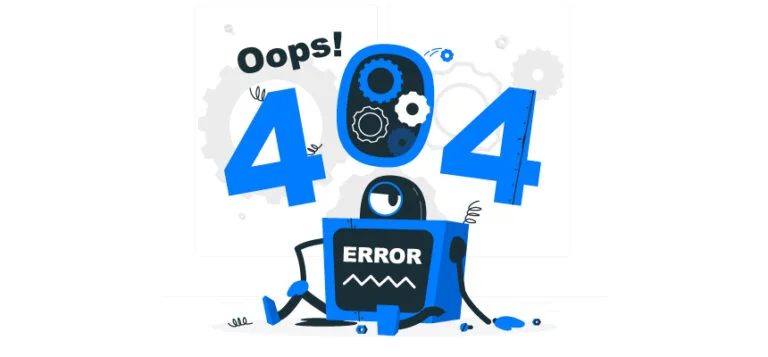What Is a 404 Error?
A 404 error is a response code indicating that the server could not find the requested resource. It is commonly referred to as a “404 page not found” error. This error occurs when a user attempts to access a webpage that no longer exists or has been moved to a different location. It can also happen if there is a URL typo or the server is experiencing technical issues.
Why Does It Occur?
There are several reasons why a 404 error may occur. The most common cause is that the webpage has been deleted or moved to a different location. It can happen if the webpage owner has decided to remove or update the content on the webpage. It can also occur if the webpage has been moved to a different location as part of a website redesign or restructuring.
Another reason for the 404 error is that the user has typed in an incorrect URL or a typo in the link they clicked on. It can happen if the user attempts to access a webpage from an old bookmark or an association that has been shared with them.
Tips for Troubleshooting 404 Errors on Your Website
If you are experiencing 404 errors on your website, there are a few steps you can take to troubleshoot the issue.
Check the URL: Make sure the URL is correct, and there are no typos. You can also try accessing the webpage using a different browser or device to see if the error persists.
Check for Redirects: If the webpage has been moved to a different location, a redirect may be in place that directs users to the new site. You can check for redirects using a tool such as the Redirect Mapper.
Check for Technical Issues: If no redirects are in place and the URL is correct, there may be a technical issue with the server. You can check for issues by checking the server logs or contacting your hosting provider for assistance.
Check for Broken Links: If you have recently made changes to your website, you may have broken some internal links. You can check for broken links using a tool such as the Broken Link Checker.
Best Practices for Handling 404 Errors on External Websites

https://www.freepik.com/free-vector/_28998047.htm
If you encounter 404 errors on external websites, there are a few best practices you can follow to handle the issue.
Check the URL: As with troubleshooting 404 errors on your website, you should first check to ensure that the URL is correct and that there are no typos.
Check for Redirects: If the webpage has been moved to a different location, a redirect may be in place that directs users to the new site. You can check for redirects using a tool such as the Redirect Mapper.
Check the Website’s Social Media Accounts: If the webpage is no longer available, the website owner may have shared an update on their social media accounts. You can check their accounts for updates on the web page’s status.
Contact the Website Owner: If you are still looking for an updated URL or information about the web page’s status, you can contact the website owner for assistance. You can usually find contact information on the website’s “Contact Us” page or use a tool like WhoIs to find the website’s registered owner.
Creative Ways to Turn a 404 Error Page into a User Experience Opportunity
While a 404 error page can be frustrating for users, it doesn’t have to be a negative experience. Instead, it can be an opportunity to create a unique and memorable user experience. Here are a few creative ways to turn a 404 error page into a user experience opportunity:
- Use Humour A little bit of humour can go a long way in easing the frustration of a 404 error page. Consider adding a humorous image or message to your 404 error page to put a smile on your users’ faces.
- Offer Suggestions Instead of just displaying an error message, consider offering tips to your users on what they can do next. It could include providing links to popular pages on your website or submitting a search function to help them find what they are looking for.
- Create a Custom Design Instead of using a generic 404 error page template, consider creating a design that reflects your brand’s personality and style. It can help make the error page feel like a natural part of your website rather than an unpleasant interruption.
- Add Social Media Links If your website has a solid social media presence, consider adding links to your social media accounts on your 404 error page. It can help users stay connected to your brand and discover new content.
- Offer a Way to Report the Error If your users encounter a 404 error page, it may be due to a broken link or a typo in the URL. Consider adding a form or contact information on your 404 error page so that users can report the error to you and help improve the user experience on your website.
Conclusion
In conclusion, a 404 error page doesn’t have to be a negative experience for your users. By using creativity and offering helpful suggestions or resources, you can turn a 404 error page into a unique and memorable user experience.
If you want to design and develop an error-free website that will boost your customer experience, consider contacting Sanmark Solutions. Our team of experienced web developers is dedicated to creating user-friendly websites that are easy to navigate and free of errors. We will work with you to understand your business goals and build a website that meets your needs and exceeds your expectations. Contact Sanmark Solutions today to learn more about how we can help you create a seamless and enjoyable online experience for your customers.
Feature image credit: https://www.freepik.com/free-vector/_28998047.htm

Leave A Comment